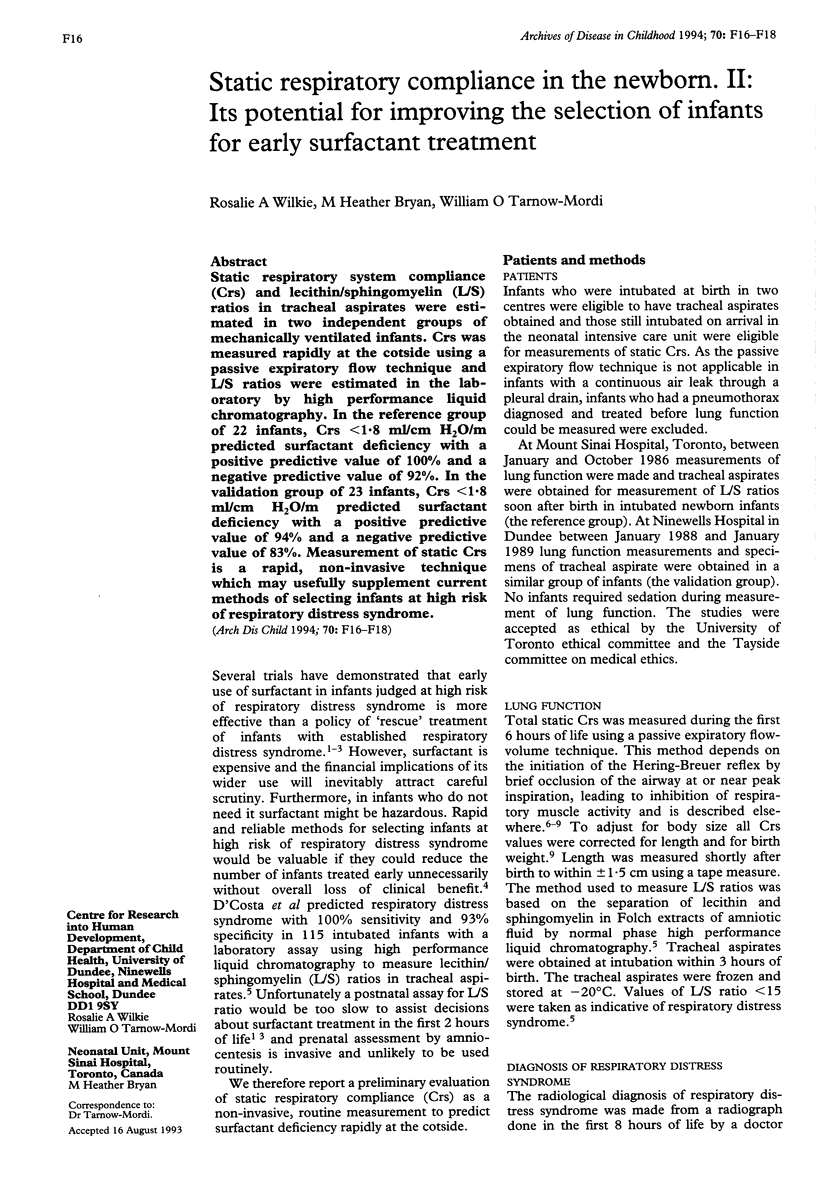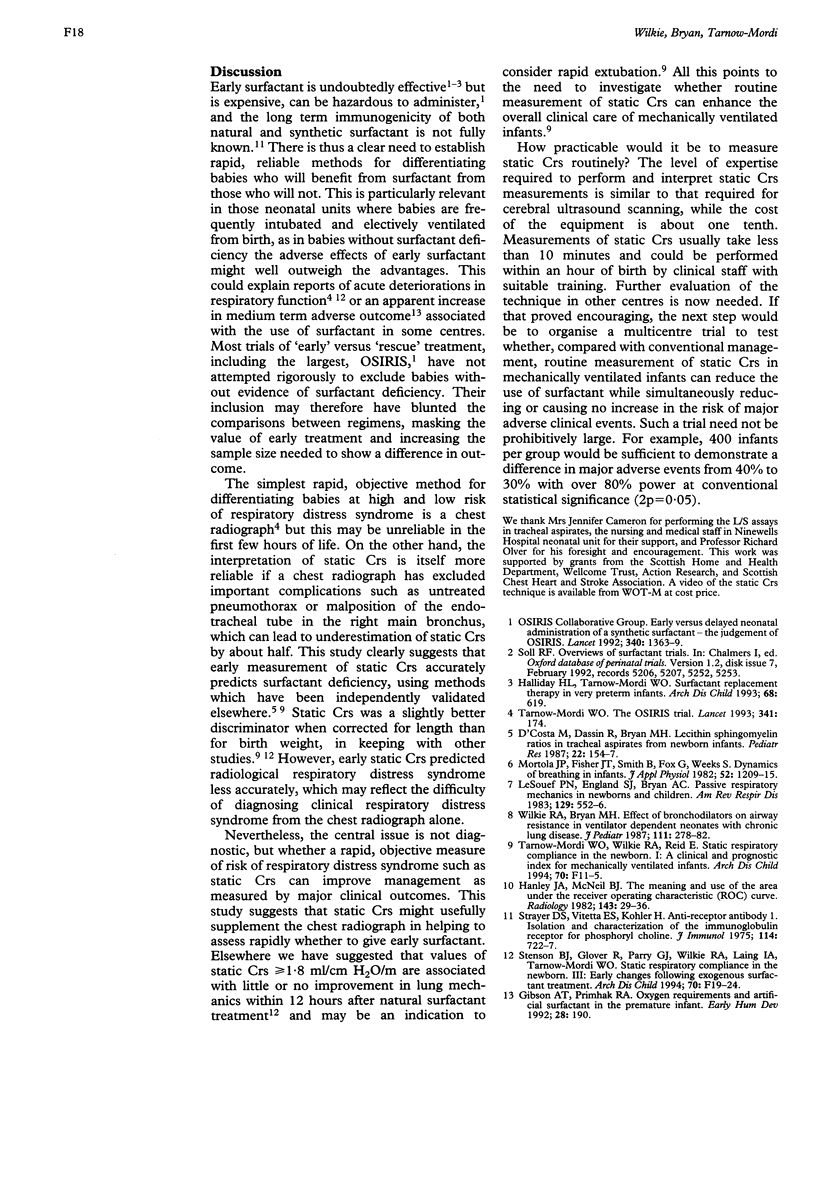Abstract
Static respiratory system compliance (Crs) and lecithin/sphingomyelin (L/S) ratios in tracheal aspirates were estimated in two independent groups of mechanically ventilated infants. Crs was measured rapidly at the cotside using a passive expiratory flow technique and L/S ratios were estimated in the laboratory by high performance liquid chromatography. In the reference group of 22 infants, Crs < 1.8 ml/cm H2O/m predicted surfactant deficiency with a positive predictive value of 100% and a negative predictive value of 92%. In the validation group of 23 infants, Crs < 1.8 ml/cm H2O/m predicted surfactant deficiency with a positive predictive value of 94% and a negative predictive value of 83%. Measurement of static Crs is a rapid, non-invasive technique which may usefully supplement current methods of selecting infants at high risk of respiratory distress syndrome.
Full text
PDF


Selected References
These references are in PubMed. This may not be the complete list of references from this article.
- D'Costa M., Dassin R., Bryan H. Lecithin/sphingomyelin ratios in tracheal aspirates from newborn infants. Pediatr Res. 1987 Aug;22(2):154–157. doi: 10.1203/00006450-198708000-00010. [DOI] [PubMed] [Google Scholar]
- Halliday H. L., Tarnow-Mordi W. O. Surfactant replacement therapy--time for thought. Arch Dis Child. 1993 May;68(5 Spec No):619–619. doi: 10.1136/adc.68.5_spec_no.619. [DOI] [PMC free article] [PubMed] [Google Scholar]
- Hanley J. A., McNeil B. J. The meaning and use of the area under a receiver operating characteristic (ROC) curve. Radiology. 1982 Apr;143(1):29–36. doi: 10.1148/radiology.143.1.7063747. [DOI] [PubMed] [Google Scholar]
- Lesouef P. N., England S. J., Bryan A. C. Passive respiratory mechanics in newborns and children. Am Rev Respir Dis. 1984 Apr;129(4):552–556. [PubMed] [Google Scholar]
- Mortola J. P., Fisher J. T., Smith B., Fox G., Weeks S. Dynamics of breathing in infants. J Appl Physiol Respir Environ Exerc Physiol. 1982 May;52(5):1209–1215. doi: 10.1152/jappl.1982.52.5.1209. [DOI] [PubMed] [Google Scholar]
- Stenson B. J., Glover R. M., Parry G. J., Wilkie R. A., Laing I. A., Tarnow-Mordi W. O. Static respiratory compliance in the newborn. III: Early changes after exogenous surfactant treatment. Arch Dis Child Fetal Neonatal Ed. 1994 Jan;70(1):F19–F24. doi: 10.1136/fn.70.1.f19. [DOI] [PMC free article] [PubMed] [Google Scholar]
- Strayer D. S., Vitetta E. S., Köhler H. Anti-receptor antibody. I. Isolation and characterization of the immunoglobulin receptor for phosphorylcholine. J Immunol. 1975 Feb;114(2 Pt 2):722–727. [PubMed] [Google Scholar]
- Tarnow-Mordi W. OSIRIS trial. Lancet. 1993 Jan 16;341(8838):174–174. [PubMed] [Google Scholar]
- Wilkie R. A., Bryan M. H. Effect of bronchodilators on airway resistance in ventilator-dependent neonates with chronic lung disease. J Pediatr. 1987 Aug;111(2):278–282. doi: 10.1016/s0022-3476(87)80087-2. [DOI] [PubMed] [Google Scholar]


